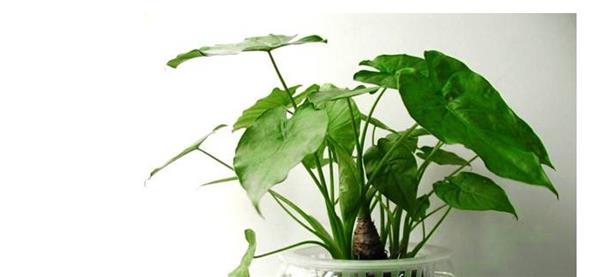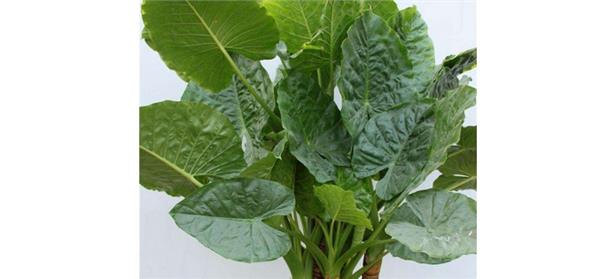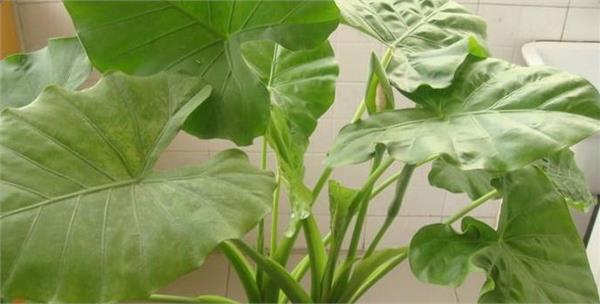Dishui Guanyin plant archives how to cultivate Dishui Guanyin
Dripping Guanyin is a very ornamental plant, has been widely concerned by people, many people like this plant, but do not know how to cultivate better, the following look at the skills of Dripping Guanyin cultivation.

Dishui Guanyin's cultivation skills:
Temperature: Hi warm, grow rapidly above 25℃, the most suitable temperature for growth is 25-30C. It has a certain cold resistance, and the winter temperature can be maintained above 2℃.
Light: like half shade, not resistant to strong sunlight exposure. Shading should be carried out from May to September, covering about 50% of the sunlight. At other times, plenty of sunlight should be given. Intolerant of excessive shade, otherwise petiole thinning and lengthening, not only plant shape is not beautiful, but also easy to break.
Watering: Because the leaves are large and consume more water, they are afraid of drought. Like slightly wet soil environment, watering during the growth period to master "dry and wet alternate and wet", watering to be sufficient, even if more watering also no harm. Especially in the summer of high temperature days, more attention should be paid to the supply of water to meet the plant's requirements for water. Because leaf surface is big, often spits out the water drop in the leaf tip in the morning, is very strange, therefore has "the drop water goddess of mercy" said. However, it is required to keep the pot soil moist at ordinary times to ensure that the plant absorbs sufficient water, and relies on the root pressure of the plant to transport water to the tip of the leaf and spit it out; when the pot soil is dry, there will be no water to drip. Winter should control water, keep the pot soil slightly moist state, as long as the leaves are not soft droop can; pot soil is too wet, easy to lead to plant rotten roots.
Environmental humidity: like humid environment, avoid dry air, growing season sunny and dry, should often spray water to branches and leaves and around to maintain a high relative humidity of the air.
Fertilization; liking to fertilize. Due to the large growth, it is necessary to supplement nutrients in time to make the stem grow stout, the leaves are large and green and bright; the leaves are small and yellow when they are short of fertilizer. During the growth period, nitrogen-based fertilizer should be applied every 10 days or so. After autumn, stop applying nitrogen fertilizer and apply 2~30: P and K fertilizer. Stop fertilizing in winter.
Pruning: yellow leaves should be cut off at any time. Because the petiole is long, avoid breaking the petiole when moving, placing and maintaining. If it is broken, it should be cut off in time.
Turn the pot: turn the pot once every 1 ~2 years. The requirements for soil are not high, but like fertile loose and well drained sandy loam, matrix can be made of humus soil, garden soil, peat soil, river sand and other materials. If sufficient basal fertilizer is applied, the leaves can grow fat. Due to large leaves and small number, petiole long, moving plants and maintenance, should avoid damage to leaves, otherwise it will reduce the ornamental value.

Dishui Guanyin Plant Archives
Chinese Scientific Name: Calamus
Latin name: Alocasia macrorhiza
Other names: Guanyin, Langdu (underground stem), Tianyu, Guanyin Lotus, Shame Tiancao, Gehe Xian, etc.
2 names: Alocasia macrorhiza
Kingdom: Plant Kingdom
Phylum: Angiosperms (Magnoliophyta)
Class: Monocotyledoneae
subclass: Alisma (Alismatidae)
Order: Alismales
Family: Araceae

The breeding method of Guanyin:
(1) Available methods such as plant division and seeding. Every summer and autumn season, calla tuber will germinate small calla with leaves, which can be divided into plants by turning pots and changing soil. When the fruit ripens in autumn, orange seeds are harvested and sown as they are harvested, or dried and stored, and sown after spring of the following year.
(2) For perennial old plants, stem cutting can be combined with plant renewal, and stem cutting can be carried out from the base of the plant about 5 cm away from the unearthed surface. There are two advantages to cutting the stem of calla: one is that the plant loses its top growth advantage, so that the nutrient accumulation base promotes a large number of sprouts at the root and stem base, which is conducive to the propagation speed and reproduction quantity; the other is that the old stem can be cut into branches about 15 cm in length, and it can be inserted into sandy loam soil for cultivation after drying in the shade for a long time. Especially for the growing section at the top, cut off all the formed leaves and directly put them into the pot, insert and cultivate synchronously. After two months of cultivation, a pot of large leaves, close branches, short and strong formed plants will be formed, which will have some elegant charm when placed indoors. The dried taro is suitable for spring, summer and autumn.
During the transplanting period, the moisture content of the substrate (sand 6 parts: garden soil 4 parts) should be kept, and the air humidity should be increased. Many strong roots can grow in about 7-10 days. During the cultivation period of old plants, due to the humid environment or summer and autumn, spray water on the leaves early and late every day, and occasionally a few new plants will sprout on the old stems (especially on the stem base left after cutting), and many aerial roots can be attached, which can be broken off from the junction between the daughter plants and the mother plants.
The above is the relevant introduction of this article, I believe you have read this also have a simple understanding, if necessary, you can continue to pay attention to No. 1 home network, to learn more information.
Related
- Wuhan Hospital Iron Tree Blooming Result Was Instantly Frightened by the Gardener Master
- Which variety of camellia is the most fragrant and best? Which one do you like best?
- What is the small blue coat, the breeding methods and matters needing attention of the succulent plant
- Dormancy time and maintenance management of succulent plants during dormancy
- Minas succulent how to raise, Minas succulent plant pictures
- What are the varieties of winter succulent plants
- How to raise succulent plants in twelve rolls? let's take a look at some experience of breeding twelve rolls.
- Attention should be paid to water control for succulent plants during dormant period (winter and summer)
- Watering experience of twelve rolls of succulent plants
- Techniques for fertilizing succulent plants. An article will let you know how to fertilize succulent plants.



